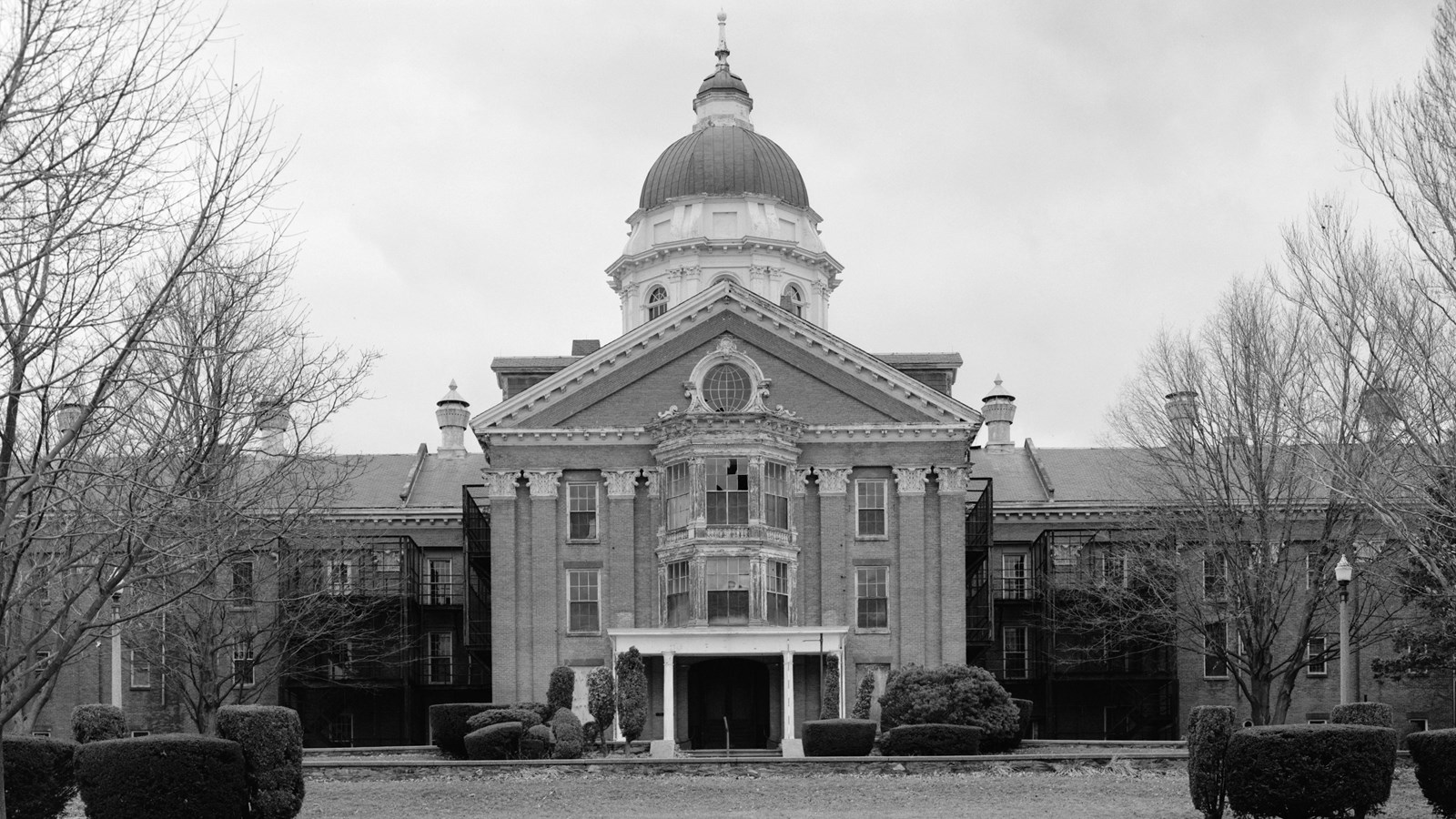Last updated: April 3, 2024
Place
Taunton State Hospital

Image from Library of Congress Prints and Photographs Division, HABS MASS,3-TAUT,2--2
Taunton State Hospital was established in 1851 as the Taunton Lunatic Asylum. It was the Commonwealth of Massachusetts' second facility for the insane, following Worcester (1833). Its significance is enhanced by the exceptional quality of its architecture, and by the fact that it was the first in the state to be organized on the influential congregate model espoused by Dr. Thomas Kirkbride of the Institute of Pennsylvania Hospital in 1847. Worcester architect Elbridge Boyden demonstrated currency with Kirkbride's concepts by creating a highly centralized main building whose domed administrative core was flanked by stepped back wings for 250 patients. His masterful and sophisticated Renaissance Revival-style design, use of fireproof cast iron, and modern ventilating techniques add to the hospital's outstanding significance. The siting and landscaping were also derived from Kirkbride's principles. The Taunton State Hospital provides a clear reflection of the early to mid-nineteenth century humanitarian reform movement for “the insane” and the resulting treatment programs, which emphasized creation of an ideal physical and moral environment to effect cures. Its later nineteenth and twentieth century development continues to reflect changing concepts about humane treatment at the state and national levels.
The Taunton Lunatic Asylum, as it was then called, was authorized in 1851 as the result of an 1848 legislative study demonstrating an urgent need to relieve overcrowding at the pioneering facility established at Worcester in 1833. This study was the result of an eloquent and moving Memorial delivered to the State Legislature by Dorothea Dix in 1843. That Memorial documented the abysmal conditions that most localities provided for their citizens with disabilities. Taunton Asylum was constructed at the same time as the state almshouses (see Monson and Tewksbury), and partially in response to the large influx of immigrants who arrived in Massachusetts at that time.
